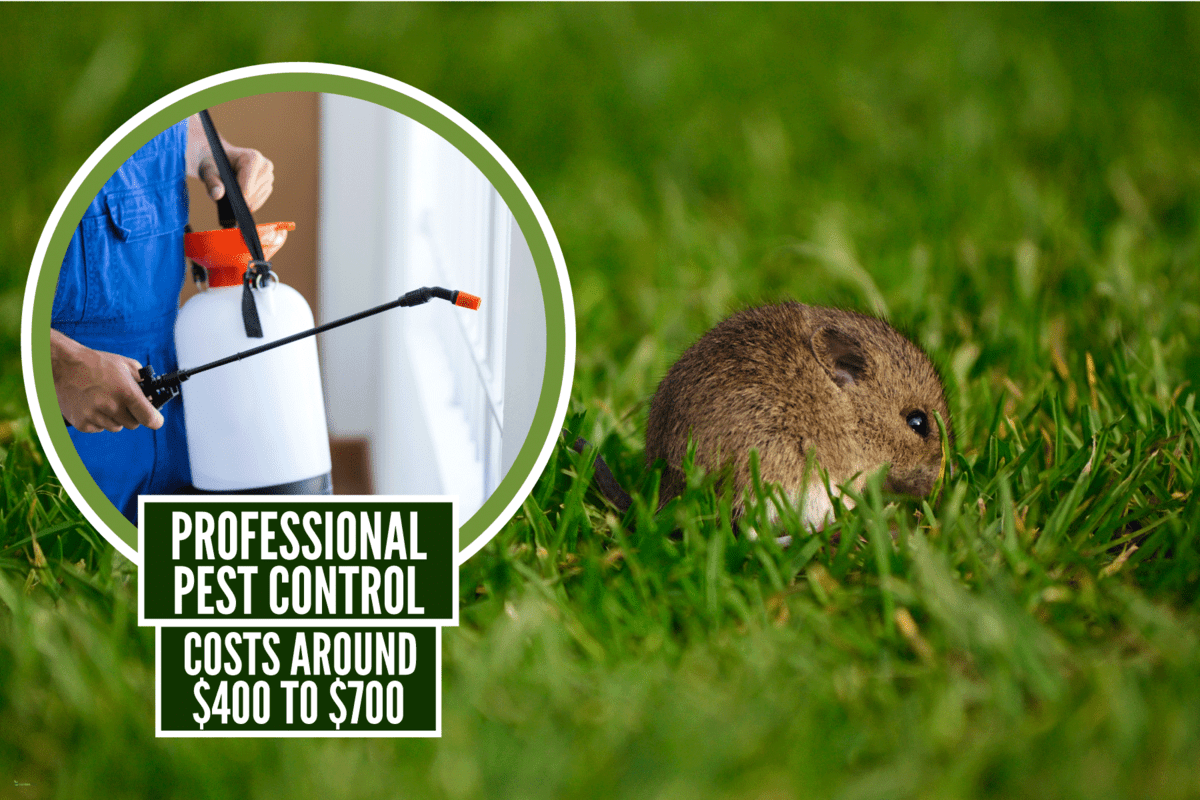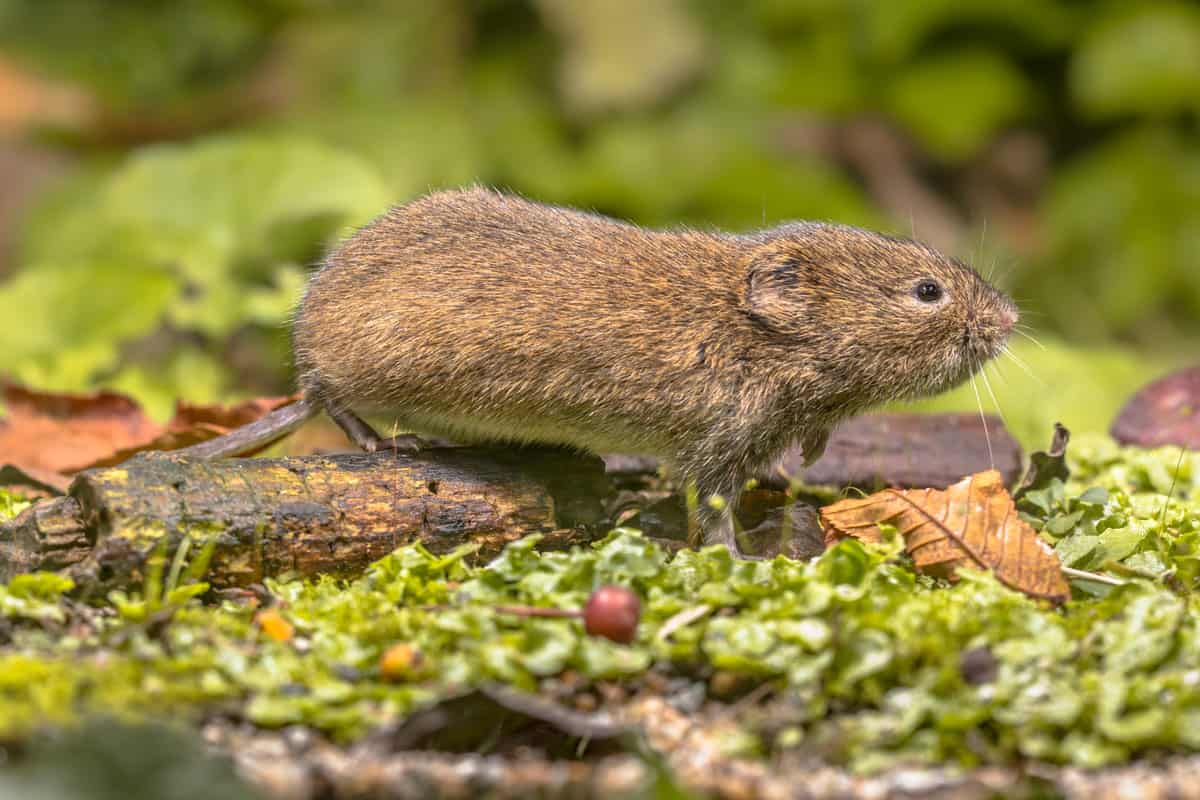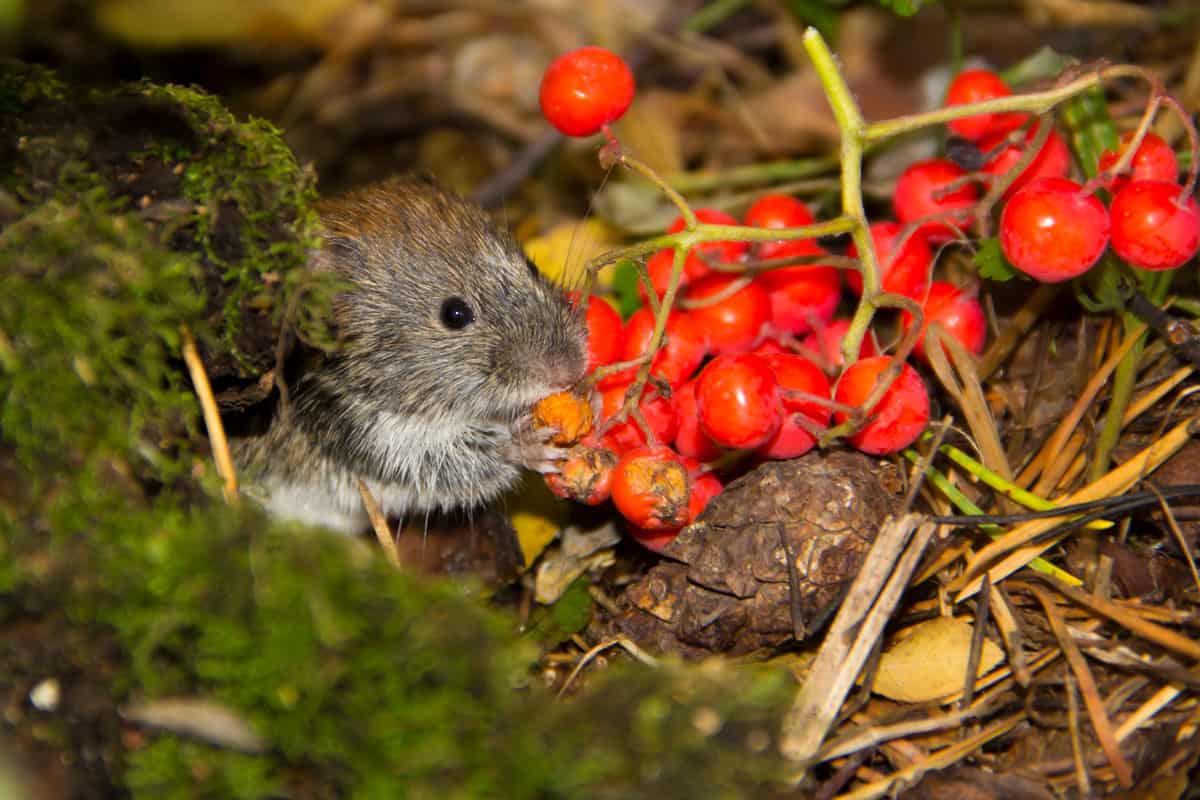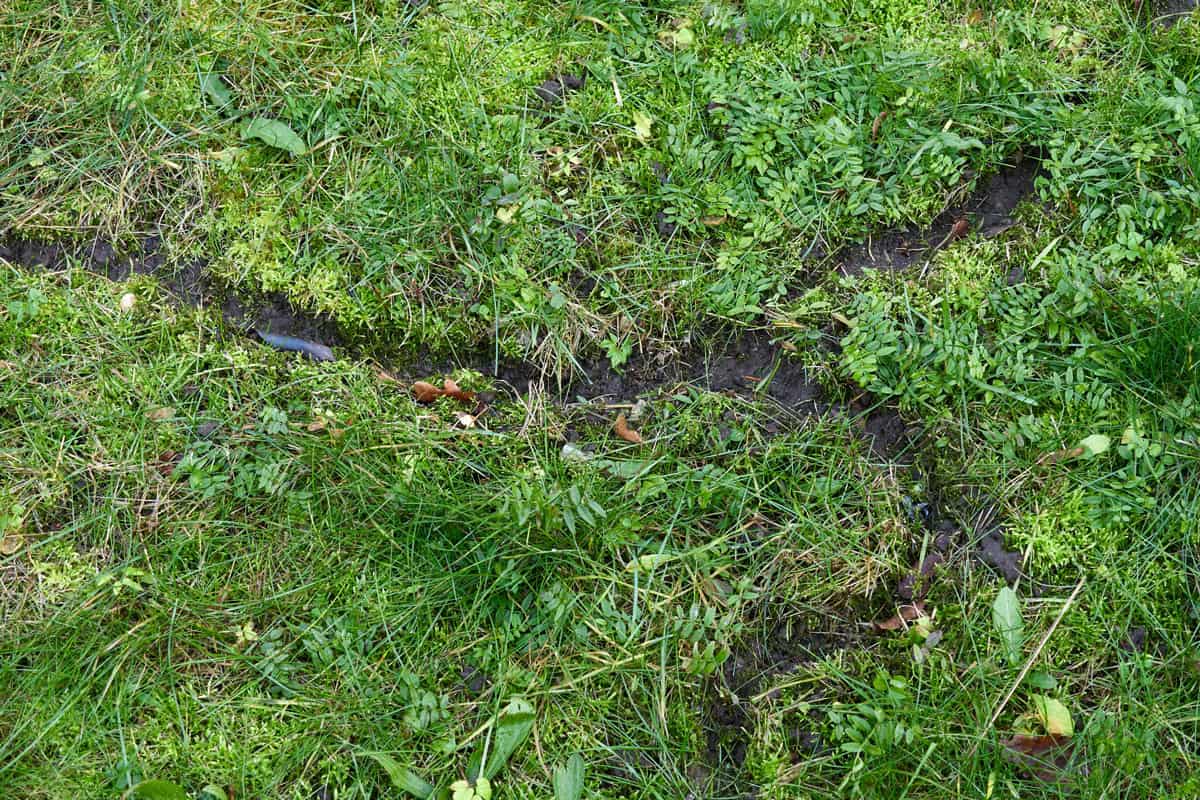If you find voles roaming your garden in winter, you may want to get rid of them but are not too sure how to go about it. Fortunately, we have done some research for you. Here is what we found.
The following are ways to get rid of voles in winter:
- Fence your garden area
- Set mouse traps
- Remove vegetation
- Use live traps
- Repel them with chemicals
- Call pest control services
It is important to get rid of the voles as soon as possible to prevent damage. Keep reading to get detailed information on how to handle a vole-infested garden.
How To Get Rid Of Voles In Winter

Voles are tiny animal that does not hibernate. Unlike many other mammals, they are more active in winter when green flora is scarce due to snow cover.
The following are the most effective ways of getting rid of voles during winter:
1. Fence Your Garden Area
Since most species of voles are unable to climb well, installing physical barriers can be an efficient strategy to prevent them from damaging your garden.
As such, this is an effective way of fighting voles. Voles will be discouraged from entering your garden during the colder months of the year when you erect a fence around your garden.
To do this, put up a fence made of wire around the outside of your garden. The size of the mesh should be no more than a quarter inch.
It is important to ensure that the fence is at least 12 inches above the ground. To prevent voles from tunneling underneath the fence, the bottom border should be buried between 6 and 10 inches below the earth's surface.
2. Set Mouse Trap
Mouse traps can be used to capture voles. Set the trap so that it is perpendicular to a path used by voles, and make sure the trigger is aligned with the route voles use on a daily basis.
Peanut butter is an excellent bait for trapping voles. Late winter is the best time to set traps, so you shouldn't have any trouble catching them during that period.
The most important factor in determining whether or not you will be successful in trapping is figuring out where the voles are most likely to use as a passageway. You should place the trap in that area.
Areas polluted with the pee and feces of the animal are usually good indicators of a suitable passageway to set the trap.
Mouse traps might not be the best option for dealing with severe vole infestations, but they are also effective in reducing the overall population, especially during winter. When you trap them, dispose of them as far as you can from your garden.
Click here to see this mouse trap on Amazon
3. Remove Vegetation
To effectively get rid of vole, you may need to apply more than one strategy. You can also remove vegetation in the area.
Removing voles' food supplies is one of the best methods for permanently getting rid of these pests. Voles never want to eat in the open where other animals can see them. Because of this, altering their natural environment is one of the simplest ways to bring their population under control.
Barks, seeds, and roots of trees, as well as grasses and herbaceous plants, are all food voles enjoy. They can't do without them.
So, remove any dense ground cover, use a thin layer of mulch around trees and bushes, and remove snow as quickly as possible.
4. Use Live Trap
If you don't want to kill the voles by using mouse traps, you can try to capture them alive in live traps and then relocate them to a more suitable area far from your home.
Check with the relevant authorities in your area before employing live traps, since in some places it is either illegal or restricted to relocate pests and rodents.
If you want the best possible results, set a live trap that is made for small rodents and has two entrances. Set the trap perpendicular to a clearly delineated surface path and directly in the route the voles use.
Although baiting isn't always required, if you want to increase your chances of catching them, you can put peanut butter inside the traps.
Check the trap periodically, and transport the voles that are caught to an approved area - one at least five miles away from your garden.
Click here to view this live trap on Amazon
5. Repel Them With Chemicals
Voles, like other animals, find the taste and odor of some substances irritating. One such chemical is castor oil.
Castor oil can be used as a repellent for voles by sprinkling a little bit of it around your garden. Voles also dislike capsaicin. You can use this to ward off animals and other pests.
Since repellants lose their effectiveness when it rains, it will be necessary to reapply them frequently. In addition, once the voles have been exposed to the repellent more than once, they will become habituated to the smell, which will lessen its effectiveness.
The urines of vole predators can also be used as repellents. Voles avoid the smell of predator urine the most. Urine from foxes and coyotes is greatly effective for repelling voles.
Step 6: Call Pest Control Services
If you need a quick, thorough vole removal process, your best bet is to contact pest control services.
They are usually equipped with all of the required instruments, knowledge, and the appropriate approval to eliminate or relocate the voles from your garden.
If you hire a professional to remove voles from your garden, you should anticipate spending anywhere from $400 to $700. The price will vary depending on the size of your garden, your location, and the severity of the infestation.
How Long Does It Take To Get Rid Of Voles?

This depends on the approach you take. If you decide to use live traps, for instance, you should prepare to spend approximately three to four weeks bringing the vole population under control.
There is a possibility that you will observe a decrease in the vole's activity following the first treatment. On the other hand, in certain cases, a drop might not be apparent for a very long period.
You will get considerably faster results if you decide to employ a professional pest control agency rather than doing it yourself.
In the vast majority of instances, there is a good probability that you will attempt to resolve the issue on your own but sometimes vole control demands more strategic planning and attention.
Sometimes, homeowners do not have the necessary knowledge or time to deal with m ost vole-related issues. So, attempting to resolve the issue yourself will take a considerable amount of time and effort compared to hiring a professional.
Do Coffee Grounds Repel Voles?

Yes, coffee grounds can be used as a natural repellent to protect gardens and lawns from voles. You can also use it to keep other pests out of your compounds.
When you spray coffee grounds in your garden, the pungent odor will work as a deterrent to prevent voles from entering your yard or garden.
While there is evidence that coffee grounds help deter moles, voles, and other pests that can cause damage, you should use them with caution.
If you dump a lot of coffee grounds in your garden, you might find it difficult to grow anything there because the nitrogen in the soil may become depleted as a result.
What Attracts Voles To My Garden?

Voles are drawn to gardens with a lot of plant debris because it makes it easy for them to find food and gives them a place to hang out.
Voles will be drawn to your property if it contains plants or greenery. They favor properties found in damp regions or that are located close to water bodies like lakes, swamps, or other water sources.
In addition to wreaking havoc on yards and gardens that they inhabit, voles are known for transmitting diseases. This is why it's so important to get rid of these pests as quickly as possible.
How Do You Fix A Vole-damaged Garden?

Vole-damaged gardens are simple to fix and repair. Once the voles are gone, it's time to get to work fixing up the damaged garden.
With time and effort, your garden will recover from the damage. Using a hoe or rake, loosen the compacted soil and reseed the harmed areas. Apply fertilizer to the damaged areas and maintain a constant moisture level on the surface while the new growth takes hold.
Add more topsoil to the bare areas, the runways, and the holes. The fertile topsoil will encourage the newly raked grass to grow and conceal the vole damage.
The best way to help trees and shrubs recover from vole-caused root damage is to prune them. This helps the damaged roots be less burdened as they repair and recover.
Click here to see this rake on Amazon
To Wrap Up

Voles can ruin your garden. To get rid of them, all you need to do is fence your garden area, use mouse traps, remove vegetation, set live traps, and repel them with chemicals. But if none of these methods prove effective, don't hesitate to contact a pest control service for assistance.
If you enjoyed reading this post, here are similar articles you may like:
What Is Eating My Allium Leaves [And How To Prevent It]?



